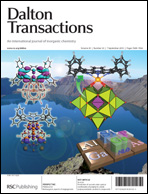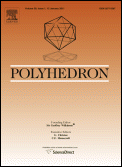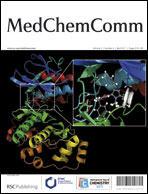The Jožef Stefan Institute is the largest research institute in Slovenia. The main research areas are physics, chemistry, molecular biology, biotechnology, information technologies, reactor physics, energy and environment. At the beginning of 2013 the institute had 962 employees, of whom 404 were PhD scientists.

Dalton Transactions is a weekly peer-reviewed scientific journal covering original (primary) research and review articles on all aspects of the chemistry of inorganic, bioinorganic, and organometallic compounds. It is published by the Royal Society of Chemistry and the editor-in-chief is Russell Morris. The journal was named after the English chemist, John Dalton, best known for his work on modern atomic theory. The journal was named a "rising star" in 2006.

The Journal of Biological Chemistry (JBC) is a weekly peer-reviewed scientific journal that was established in 1905. Since 1925, it is published by the American Society for Biochemistry and Molecular Biology. It covers research in areas of biochemistry and molecular biology. The editor is Alex Toker. As of January 2021, the journal is fully open access. In press articles are available free on its website immediately after acceptance.

Inorganic Chemistry is a biweekly peer-reviewed scientific journal published by the American Chemical Society since 1962. It covers research in all areas of inorganic chemistry.

The European Journal of Organic Chemistry is a weekly peer-reviewed scientific journal covering organic chemistry. It is published by Wiley-VCH on behalf of Chemistry Europe.
Organometallics is a biweekly journal published by the American Chemical Society. Its area of focus is organometallic and organometalloid chemistry. This peer-reviewed journal has an impact factor of 3.837 as reported by the 2021 Journal Citation Reports by Thomson Reuters.
Luminescence: The Journal of Biological and Chemical Luminescence is a monthly peer-reviewed scientific journal publishing original scientific papers, short communications, technical notes, and reviews on fundamental and applied aspects of all forms of luminescence, including bioluminescence, chemiluminescence, electrochemiluminescence, sonoluminescence, triboluminescence, fluorescence, time-resolved fluorescence, and phosphorescence. The current editor-in-chief is Yi Lv. It was established in 1986 by John Wiley & Sons as the Journal of Bioluminescence and Chemiluminescence and obtained its current title in 1999.

The European Journal of Inorganic Chemistry is a weekly peer-reviewed scientific journal covering inorganic, organometallic, bioinorganic, and solid-state chemistry. It is published by Wiley-VCH on behalf of Chemistry Europe.
Acta Crystallographica is a series of peer-reviewed scientific journals, with articles centred on crystallography, published by the International Union of Crystallography (IUCr). Originally established in 1948 as a single journal called Acta Crystallographica, there are now six independent Acta Crystallographica titles:

The Zeitschrift für anorganische und allgemeine Chemie is a semimonthly peer-reviewed scientific journal covering inorganic chemistry, published by Wiley-VCH. The editors-in-chief are Thomas F. Fässler, Christian Limberg, Guodong Qian, and David Scheschkewitz. Originally the journal was published in German, but nowadays it is completely in English.

Polyhedron is a peer-reviewed scientific journal covering the field of inorganic chemistry. It was established in 1955 as the Journal of Inorganic and Nuclear Chemistry and is published by Elsevier.
The Journal of Agricultural and Food Chemistry is a weekly peer-reviewed scientific journal established in 1953 by the American Chemical Society. Since 2015, Thomas Hofmann has been the editor-in-chief.

Journal of Biological Inorganic Chemistry is a peer-reviewed scientific journal. It is an official publication of the Society of Biological Inorganic Chemistry and published by Springer Science+Business Media.

The Journal of Radioanalytical and Nuclear Chemistry is a peer-reviewed scientific journal published by Springer Science+Business Media. It publishes original papers, review papers, short communications and letters on nuclear chemistry. Some of the subjects covered are nuclear chemistry, radiation chemistry, nuclear power plant chemistry, radioanalytical chemistry, and environmental radiochemistry.
Biological Chemistry is a peer-reviewed scientific journal focusing on biological chemistry. The journal is published by Walter de Gruyter and the current editor-in-chief is Bernhard Brüne.
Drug Research is a peer-reviewed medical journal covering drug development published by Thieme Medical Publishers. The journal was established in 1951 and the editor-in-chief is Martin Wehling.

MedChemComm is a peer-reviewed scientific journal publishing original (primary) research and review articles on all aspects of medicinal chemistry, including drug discovery, pharmacology and pharmaceutical chemistry. Until December 2019, it was published monthly by the Royal Society of Chemistry in partnership with the European Federation for Medicinal Chemistry, of which it was the official journal. Authors can elect to have accepted articles published as open access. According to the Journal Citation Reports, the journal has a 2014 impact factor of 2.495, ranking it 27th out of 59 journals in the category "Chemistry, Medicinal" and 163 out of 289 journals in the category "Biochemistry & Molecular Biology".
Catherine "Cathy" J. Murphy is an American chemist and materials scientist, and is the Larry Faulkner Professor of Chemistry at the University of Illinois at Urbana-Champaign (UIUC). The first woman to serve as the head of the department of chemistry at UIUC, Murphy is known for her work on nanomaterials, specifically the seed-mediated synthesis of gold nanorods of controlled aspect ratio. She is a member of the American Association for the Advancement of Science, National Academy of Sciences, and the American Academy of Arts and Sciences in 2019.
Samaresh Mitra is an Indian bioinorganic chemist and an INSA Senior Scientist at the Indian Institute of Chemical Biology (IICB). He is known for his researches on inorganic paramagnetic complexes and low-symmetry transition metal complexes and is an elected fellow of the Indian National Science Academy, the National Academy of Sciences, India and the Indian Academy of Sciences. The Council of Scientific and Industrial Research, the apex agency of the Government of India for scientific research, awarded him the Shanti Swarup Bhatnagar Prize for Science and Technology, one of the highest Indian science awards, in 1983, for his contributions to chemical sciences.

Archaeometry is a peer-reviewed academic journal covering archaeological science, particularly absolute dating methods, artefact studies, quantitative archaeology, remote sensing, conservation science, and environmental archaeology. It is published bimonthly by Wiley-Blackwell, on behalf of the Research Laboratory for Archaeology and the History of Art at the University of Oxford, in association with the Gesellschaft für Naturwissenschaftliche Archäologie Archäometrie and the Society for Archaeological Sciences. Its current editors are A. Mark Pollard, Ina Reiche, Brandi MacDonald, Gilberto Artioli, and Catherine Batt.










